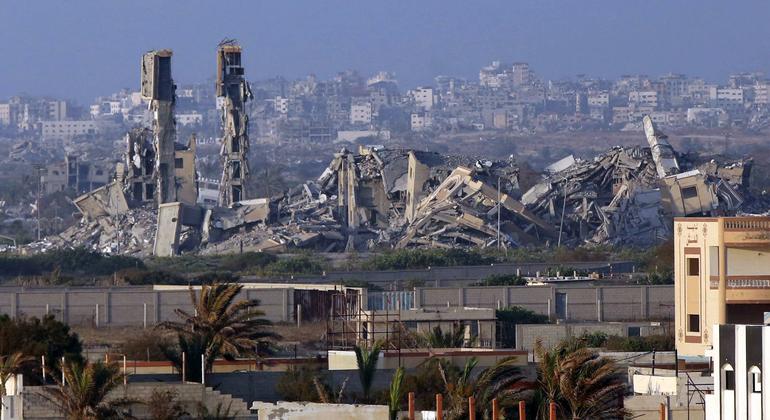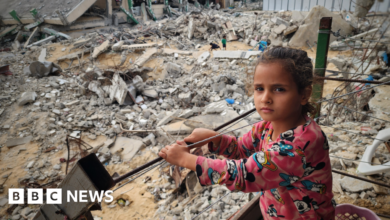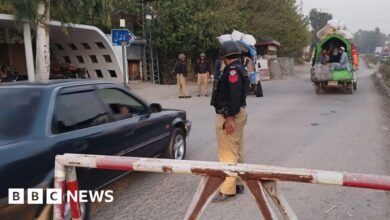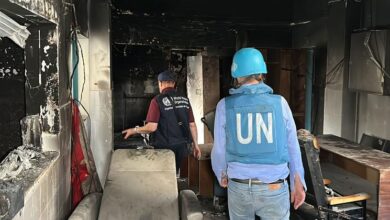Gaza ‘split in two’ as civilians, humanitarians stabilize lives, relief efforts mount

Speaking via video link from Jerusalem, Andrea De Domenico, head of the United Nations Office for the Coordination of Humanitarian Affairs (OCHA) in the Occupied Palestinian Territories (OPT), said people had been forced to “completely change their lives many times”.
“Over the past nine months, people have been moved like ‘pieces in a board game’ – squeezed from one location to another, and then to another. [and] to the next generation, regardless of our ability to support them and regardless of the availability of services wherever they go,” he said.
Meanwhile, humanitarian organizations also had to relocate their bases of operations and evacuate from one place to another as military operations changed focus.
“Military activities are promoting [us] and turned the table upside down,” he said.
He added that while discussions were underway with all relevant parties, including the Israeli authorities, on bringing relief supplies into Gaza and distributing them, the latest evacuation order in Khan Younis had “undid” all the hard work.
Life beyond imagination
An estimated 1.9 million people in this war-torn region are internally displaced – including those displaced nine or 10 times.
“They were forced to move because the patterns of war, the fierce fighting that impacted them whenever they took the risk to stay, where [they had] house or place [they had] tents, huts and temporary shelters,” he added.
Humanitarians have had to restart their efforts “multiple times,” Mr. De Domenico noted, while those displaced have had to figure out where they can find food, water and medical help, as well as reacquaint themselves with neighbors if they don’t have family.
“And that was broken – over and over again – and people had to reinvent their ability to cope with living conditions that were beyond imagination,” he said.
He also stressed that as the war continues, it continues to create more pain, suffering and humanitarian needs. However, humanitarian workers are “struggling to deliver”.
“We are there to survive and serve, to help people but serving for us is a daily struggle… literally, we have to work very hard to maintain some of our services.”

A UN team inspects an unexploded bomb lying on a main road in Khan Younis, Gaza.
‘Enough with this war’
The OCHA official outlined the challenges facing aid workers, explaining that before the war, the humanitarian centre was located in Gaza City, in the north.
“Then, on the night of October 11 and 12, in the middle of the night, the Israeli authorities ordered us to abandon those facilities and move south… we had to comply… to protect the lives of our personnel,” he said.
“We left with a sense of guilt knowing that we were leaving behind ordinary people and since then we have been determined not to let living conditions push us to move unless it is absolutely necessary for safety. [question]“ .
“We really need to draw a line… enough is enough, this war continues to tear people’s lives apart.”
‘Nowhere and no one is safe’
Mr. De Domenico reiterated that “nowhere and no one is safe” in Gaza, including civilians or humanitarian workers.
So far, at least 274 aid workers and volunteers have died – many of them on the job, others at home with their families.
“[Humanitarians] risk their lives every day and have [few, if any] Humanitarian facilities were secured as the frontline moved… despite our efforts to notify the locations, the reality… is that often those places are attacked,” he added.




